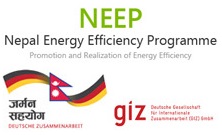- Ensure that air intake to compressor is not warm and humid by locating compressors in a well-ventilated area or by drawing cold air from outside. (Every 4ºC rise in air inlet temperature will increase power consumption by 1 %)
- Clean air-inlet filters regularly. Compressor efficiency will be reduced by 2% for every 250 mm WC pressure drop increase across the filter.
- Keep compressor valves in good condition by removing and inspecting them once every six months. Worn-out valves can reduce compressor efficiency by as much as 50%.
- Install manometers across the filter and monitor the pressure drop as a guide to scheduled maintenance and replacement of elements.
- Consider the use of regenerative air dryers, which use the heat of compressed air to remove moisture.
- Fouled inter-coolers reduce compressor efficiency and cause more water condensation in air receivers and distribution lines, resulting in increased corrosion. Periodic cleaning of inter-coolers must be ensured.
- Compressor free air delivery test (FAD) must be done periodically to check the present operating capacity against its design capacity, and corrective steps must be taken if required.
- If more than one compressor is feeding to a common header, compressors must be operated in such a way that only one small compressor handles the load variations, while other compressors operate at full load.
- If pressure requirements for processes are widely different (e.g. 3 bar to 7 bar), it is advisable to have two separate compressed air systems.
- Provide extra air receivers at points of high cyclic-air demand, which permits operation without extra compressor capacity.
- Retrofit with variable speed drives in big compressors (say over 100 kW) to eliminate the 'unloaded' running condition altogether.
- Maintain the minimum possible range between load and unload pressure settings.
- Automatic timer-controlled drain traps waste compressed air every time the valve opens. So frequency of drainage should be optimized.
- Trans-vector nozzles are to be used for low and intermediate pressure air requirements at user points. These nozzles draw a small quantity of motive air at higher pressure and mix it with ambient air, to produce compressed air at intermediate pressure, in an efficient manner, as against routine valve control method.
- Check air compressor logs regularly for abnormal readings, especially motor current cooling water flow and temperature, inter-stage and discharge pressures, and temperatures and compressor load-cycles.
- Install equipment interlocked solenoid cut-off valves in the air system so that air supply to a machine can be switched off when it is not in use.
- Pneumatic transport can be replaced by a mechanical system as the former consumes about 8 times more energy than the latter
References
Bureau of Energy Efficiency, 2010 Guidebook for National Certification Examination for Energy Managers and Energy Auditors: Book 3
Asian Productivity Organization, 2010 Training Manual on Energy Efficiency for Small and Medium Enterprises
Nepal Energy Efficiency Programme (NEEP), 2012-2016, Investment Grade Energy Audits



